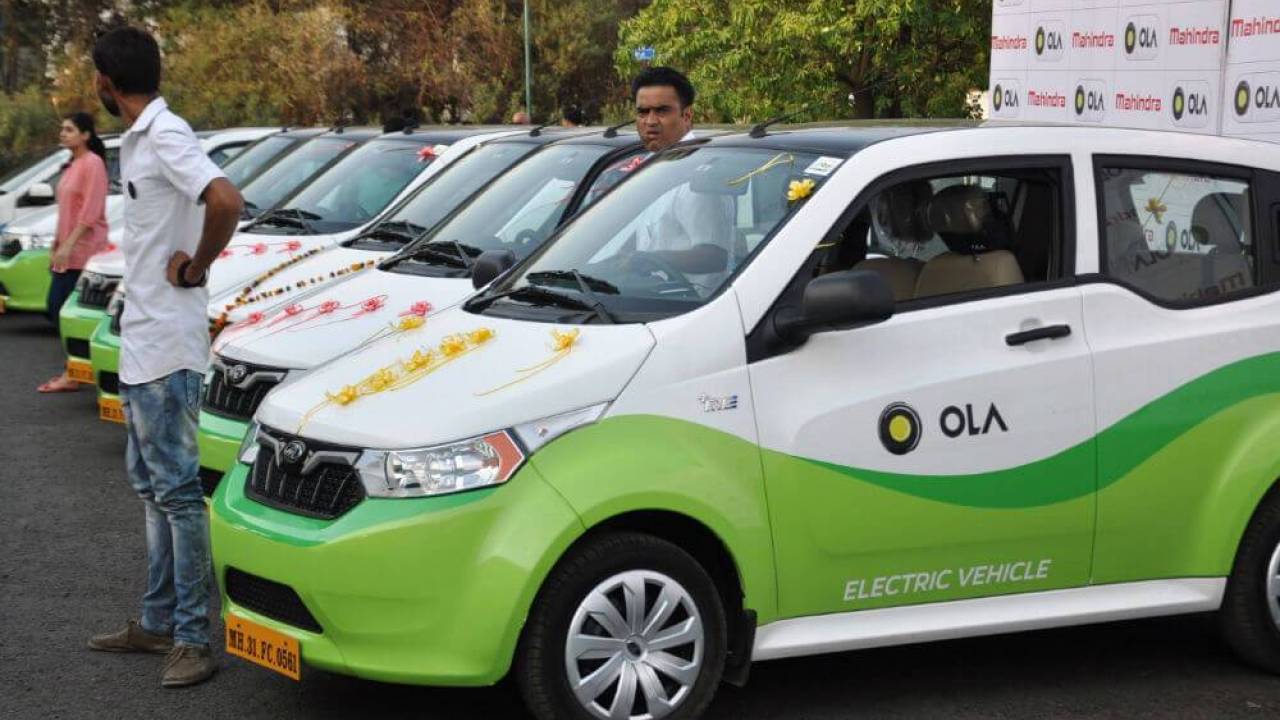Discover the incredible journey of Ola, the Indian startup that took on the world’s largest taxi company and revolutionized the ridesharing industry. Learn how they achieved this feat and the impact it had on the global transportation landscape.
Introduction
In the annals of business history, there are few tales as compelling as that of Ola, the Indian ride-hailing giant that successfully challenged and disrupted the world’s largest taxi company. This article takes you on a journey through Ola’s remarkable rise to prominence, highlighting its strategies, innovations, and the challenges it overcame to become a global force in the ridesharing industry.
Introduction
In today’s world, the term “Ola” has seamlessly replaced the word “taxi” in our daily lives. Booking an Ola has become second nature to many, and the credit for this monumental shift goes to the founders of Ola – Mr. Bhavish Aggarwal and Mr. Ankit Bhati. Their journey from inception to market dominance is a testament to the words of Winston S. Churchill: “Success is not final; failure is not fatal: It is the courage to continue that counts.”
This article delves into the captivating story of Ola, the Indian startup that fearlessly took on the world’s largest taxi company. It explores how Ola evolved from a mere dream into a global disruptor, overcoming countless obstacles and setbacks along the way.
The Genesis of Ola
Managing and nurturing a startup is an arduous task. Success requires relentless effort, constant improvement, and the ability to keep employees and investors satisfied. OlaCabs, now known simply as Ola, is an online marketplace that revolutionized taxi services in India. It commenced its journey in Mumbai but quickly relocated to India’s Silicon Valley – Bangalore. Remarkably, even as a millionaire, Bhavish Aggarwal, the mastermind behind Ola, continues to rely on cabs and does not own a personal car.
The Indian Taxi Market

The Indian taxi market is incredibly fragmented, divided into two major segments: organized and unorganized markets. The organized sector is valued at $500 million, while the unorganized sector dwarfs it at $8.5 billion, capturing a commanding 60% market share. The organized sector includes car rental companies like Meru, affiliates providing tour packages, and aggregators – a category pioneered by startups like OlaCabs.
Out of the plethora of taxi service providers, only three companies truly excelled in customer service, driver behavior, punctuality, and unique offerings: OlaCabs, TaxiForSure, and Uber.
Ola – Company Profile
Ola operates under the umbrella of ANI Technologies Private Limited, using the trade name “Ola.” It leverages cutting-edge technology to deliver fast and efficient taxi services. The journey began in December 2010 when Bhavish Aggarwal and Ankit Bhati founded OlaCabs.

Bhavish Aggarwal: A computer science graduate from IIT Bombay in 2008, Bhavish worked for Microsoft Research in Bangalore for two years. However, his entrepreneurial spirit eventually led him to establish OlaCabs. This decision was influenced by a harrowing experience during a car rental journey from Bangalore to Bandipur, where the driver’s mid-journey renegotiation and abandonment planted the seed for an online cab booking platform.
Ankit Bhati: Ankit, the co-founder of OlaCabs, joined forces with Bhavish. Initially skeptical, his parents eventually became angel investors in the venture after being approached by Kunak Bahl, Rehan Yar Khan, and Anupam Mittal, the founders of Snapdeal.
Ola’s journey from idea to reality was paved by many helping hands. Usha Loutongbam joined as the product manager, while Ajinkya Potdar and Khushal Bokadey, both interns, developed the Android and iOS versions of the app, respectively, in record time.
Bhavish’s philosophy for running a business is centered on maintaining “zero” inventory, a strategy that has contributed significantly to Ola’s success.
Name, Tagline, and Logo

The name “Ola” draws inspiration from the Spanish word “Hola,” meaning “Hello” in English. This choice signifies Ola’s friendly and easy-to-use services. The logo, a simple design with an “O” that resembles a tire, represents the brand.
The Product
Over the years, Ola has expanded its service offerings. It provides various ride options, ranging from budget to luxury, subscriptions, entertainment, and more. This diversification has been crucial in competing effectively in the market, especially in terms of pricing strategies. OlaCabs also introduced Ola Money, a mobile wallet facilitating seamless payments for rides. Additionally, Ola Corporate services help companies monitor employee travel expenses and ensure safety.
Business and Revenue Model
Ola operates on a straightforward concept: it does not own any of the cabs but acts as a facilitator for cab bookings. Drivers must have valid permits and approval from transport authorities to join Ola. They can be self-employed or work with operators and access the Ola driver app after registration and a positive due diligence report. Ola charges a commission, averaging 15%, on bookings made through the app.
Customer Acquisition
Ola has expanded its operations to three international markets: Australia, the United Kingdom, and New Zealand. Australia alone boasts nearly forty thousand registered drivers across seven cities, while Ola serves over a hundred cities in India.
Funding:

Despite being an eight-year-old startup, Ola commands a valuation exceeding $6 billion, making it the third-highest valued consumer internet company in India. To date, Ola has secured a total of $3 billion in funding through debt financing and the secondary market. Major shareholders include Softbank Group (26.1%), Tiger Global (15.94%), Tencent (10.39%), Matrix Partners (8.75%), and DST Global (6.72%).
Competitors :

Ola’s primary competition comes from Uber, the world’s most financially backed startup, with a valuation of $62 billion and over $15 billion in debt and equity funding. Other competitors in the Indian market include Zoom cars, Carzonrent, and Meru Cabs. Additionally, Rapido, a bike taxi service, is gradually gaining market share at Ola’s expense.
Acquisitions and Mergers
Ola has strategically acquired several smaller ventures to strengthen its market position. These acquisitions include TaxiForSure (a Bangalore-based taxi service) for $200 million in March 2015, Geotagg (a trip planning company providing bus shuttle services) in November 2015, and Qarth (a mobile payments app) in March 2016. In April 2018, Ola further expanded its portfolio by acquiring Ridlr, a real-time traffic updates app.
Marketing Mix of OlaCabs
Product: Ola has redefined travel for Indians by offering hassle-free cab bookings. Their diverse ride options cater to a wide range of budgets and needs, including:
- Ola Mini
- Ola Sedan
- Ola Prime
- Ola Rental
- Ola Outstation
- Ola Pink (designed for women’s safety)
Ola also introduced carpooling services, and the success of this initiative led to its expansion into various cities.
Place: Ola operates exclusively online, allowing users to book cabs through the Ola website or a downloadable app. The company began in Mumbai and later moved its headquarters to Bangalore. By 2014, Ola had expanded its reach to approximately two lakh cars in a hundred Indian cities.
Price: Ola’s valuation currently stands at $6 million, and its consolidated revenue has seen a remarkable 60.9% increase as of March 31st, 2018. Initially, Ola accepted payments exclusively through PayTm, but it later introduced cash payment options. The company offers competitive pricing across various vehicle categories, ensuring a wide appeal to customers. Ola regularly runs promotional campaigns and offers incentives such as free rides, 50% discount coupons, rupees fifty off, and free rides for new members to expand its customer base.
Promotion: Ola’s rapid ascent in the ride-sharing market is attributed to its strong brand presence and high brand awareness among customers. The company employs a mix of traditional and modern marketing techniques, including mobile ads, magazines, newspapers, billboards, and an active presence on social media platforms such as Twitter, Facebook, Instagram, and Blogs. Ola has also strategically partnered with TVF (The Viral Fever), an online web series platform in India, to tap into TVF’s existing fan base and acquire new customers. Promotional incentives, such as free rides and discount codes, further bolster Ola’s customer acquisition efforts.
During the Chennai floods, Ola even launched ferry services to help people reach home and deliver essential supplies like food and water, showcasing a commitment to social responsibility.
STP for OlaCabs
Segment: Ola targets individuals who require convenient transportation services.
Target Group: Ola primarily caters to customers in need of immediate cab services.
Positioning: Ola positions itself as an efficient and customer-focused service provider, leveraging technology to ensure high satisfaction levels among its users.
SWOT Analysis for OlaCabs
Strengths:
- First-mover advantage
- Acquisition of TaxiForSure
- Extensive online and print media promotion
- Strong network and a vast customer base
- Rapid expansion through the app
- Attractive to high-profile investors
- High-quality service
Weaknesses:
- Driver misbehavior reflects poorly on the company
- High cash burn during peak hours due to increased demand
Opportunities:
- Acquisition of smaller players in the market
- Shifting customer preferences toward convenience and increased demand
- Rising disposable income
- Growth in the number of smartphone users
- Potential to tap into the large unorganized sector
Threats:
- Limited customer loyalty in the industry
- Competition from various other players
- Increased competition
- Lack of clear government regulations in developing countries like India
- Strong competition from Uber, a well-funded rival
Economic Strategy:

Economic Strategy
Ola adopts a targeted approach, segmenting customers based on budget and demand. Its pricing strategy includes various service tiers, such as Ola Mini, Ola Sedan, Ola Micro, Ola Prime, Ola Pink, and corporate carpooling. The pricing structure is flexible, accommodating different vehicle categories, and is designed to gain a competitive edge in the market. Ola regularly offers promotions and incentives to expand its customer base.
Conclusion
Today, Ola stands as the largest cab service provider in India, having created a significant impact in the taxi market sector. Over the years, its revenue has multiplied nearly tenfold. Ola’s success can be attributed to its commitment to providing quick, efficient, and accessible transportation. With its easy booking and payment options, along with flexible timings, Ola has simplified the lives of countless individuals.
In the near future, Ola aims to extend its reach to include the delivery of groceries and more. Kudos to the two visionary Indians, Bhavish Aggarwal and Ankit Bhati, who have made our lives more convenient through their innovative services.
FAQs
Q: How did Ola manage to compete with Uber? A: Ola’s success against Uber can be attributed to a combination of local insights, innovative strategies, and technological advancements that enhanced user experience.
Q: What impact did Ola’s global expansion have on the industry? A: Ola’s global expansion led to price reductions, improved driver benefits, and technological advancements that reshaped the ridesharing landscape.
Q: How did Ola handle regulatory challenges in various countries? A: Ola navigated regulatory challenges through effective communication, partnerships, and compliance measures, setting an example for other ridesharing companies.
Q: What were Ola’s sustainability initiatives? A: Ola’s sustainability initiatives included the adoption of electric vehicles and measures to reduce the carbon footprint of its operations.
Q: How did Ola benefit commuters? A: Ola’s intense competition with Uber led to lower prices for commuters, making ridesharing an affordable and convenient option for many.
Q: What lessons can businesses learn from Ola’s success story? A: Businesses can learn valuable lessons about market adaptation, technological innovation, and customer-centric strategies from Ola’s journey.




